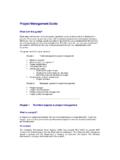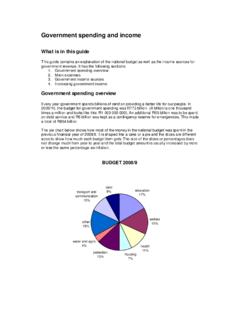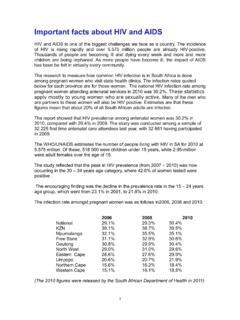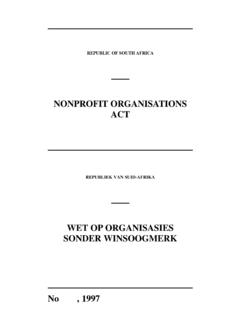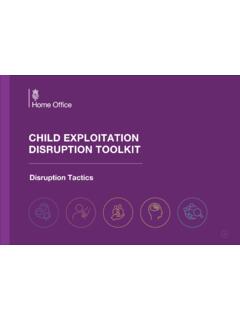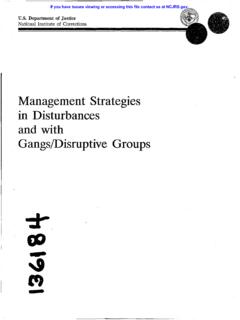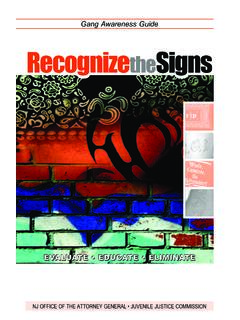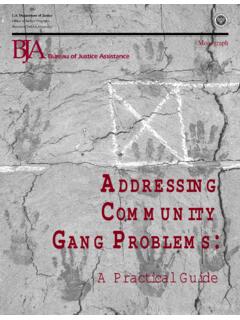Transcription of Getting to Know your Community and their Needs
1 Getting to know your Community and their Needs What is in th is gu ide? This guide will show you how to carry out the Needs assessments to make sure that the real Needs of the Community are addressed. It contains the following sections: 1. Why Needs Assessment? 2. How can we assess the Needs of the Community ? 3. Steps in a Needs Assessment programme 4. Understanding your area and doing a Community profile Ke y th in gs yo u sho ul d find o ut Exa mpl e o f co mmuni ty pro fi le Exa mpl e o f se ctoral sh eet 5. Where can you get the information? Community Consultation Meetings Di re ct Con su l ta tion - su rve ys 6. Ho w to An al yse Su rve y Re su l ts 7. Participatory Rapid Appraisal (PRA) Ke y P ri nci ple s o f Pa rti ci pa to ry Rapi d A pprai sa l PRA T o ol s fo r you to u se Ho w to org an i se a P RA Practical examples of PRA tools 1.
2 Why Needs Assessment? Needs asse ssment (NA) are carried out to make sure that the real Needs of communities are addressed by development programmes and projects. It involves research and systematic consultation with Community stakeholders and project beneficiaries before the project is designed and implemented. NA helps to identify problems and Needs and involves the people who are meant to benefit from the project in deciding on the pro je ct de si gn . Po te n ti al p ro ble ms ca n be i d en ti fi ed ea rl y a nd a goo d NA wi ll h el p to me a sure reactions, preferences and priorities before any final decisions are made. NA must combine Getting the facts as well as the opinions of a representative sample of beneficiaries and other stakeholders to ensure that their concerns are heard and incorporated into project and policy formulation.
3 The main purposes of a NA are to: Provide decision-makers and communities with facts and data to help them make correct de ci si o ns; undertake systematic listening, which gives voice to poor and other hard-to-reach be ne fi ci arie s; obtain feedback on preferences and priorities; so that government can plan to use limited resources in the best possible way. 2. How can we assess the Needs of the Community ? All over the world there are many examples of development work done with no or poor Needs assessments that lead to inappropriate projects. There are many different tools that can be used to assess Needs . Community and development activists are well placed to help with Needs asse ssme n ts a n d to m a ke su re tha t th e voi ce s o f the po or an d margi n ali sed a re hea rd . In thi s guide we will focus on tools that can be used by activists to asse ss Needs .
4 Many development projects will employ a professional team of managers who will collect scientific data and use other methods to asse ss Needs . Activists should operate in partnership wi th the se i ni tia tive s a nd he lp to ma ke need s a ssessm e n ts a s re al i sti c a nd a ccu rate a s possi b l e by en su ri n g commu ni ty pa rti ci pa ti o n. your Needs assessment work is not meant to replace quantitative surveys and other traditional methods for data gathering; rather it complements these professional methods with practical and useful information on the perceptions of a Community to inform Project Managers and policy makers. Needs Asse ssment is done by investigation and evaluation that relies mainly on methods such as: Research and data collection Information is collected about the facts that will influence decisions.
5 For example if the project in vo l ve s sa n i tation, fa cts wi ll b e co lle cted ab ou t the n umbe r of pe ople i n vol ve d , the l e ve l of services that is affordable, the ongoing operational costs, the availability of water and sewage works, etc. Most of the research and data collection will be done by professionals like engineers an d te chni cal staff. Structured surveys and interview ing, around key themes or topics A good way of measuring Community opinion is to do a survey or interviews with lots of people. This can be done by a professional team or a team of volunteers, activists or ward committee members. We will learn how to do design and do a basic survey that will provide scientifically reli able results. Focus group discussions or consultations w ith sectors of the Community So me time s i t i s be st to have m eeti ng s wi th a ffe cted g rou ps so th at i ssu e s ca n be exp lai ned a nd discussed in detail.
6 We will learn how to run a simple consultation meetings. Participatory rapid appraisal (PRA) and observation Participatory appraisal is a set of tools that can be used to involve the Community and get information from them. It is very useful in areas where much of the knowledge and facts you need are not written down anywhere. For example if you are doing a farming development project in a rural Community you can use these tools to find out what farming already takes place, who owns and control s resources and what land i s sui table for what kinds of farmi ng. We will l earn a set of ea sy to use P RA tool s. Needs asse ssments can be carried out before and during a project. Projects go through cycles, Need Identif icationProject preparationImplementationEvaluat ionImprovement In each of these phases different tools can be used to make sure the Community is consulted and re m ai n s on bo a rd NAs can be done by professionals and/or by activists.
7 For big and expensive projects it is best to get a good mix of skills in a NA team so that everything from technical to Community research can be done. 3. Steps in a Needs Assessment programme Experience in many Community development projects has shown that the following Needs Assessment steps are important to follow: Familiarisation: technical leaders are selected to guide the NA project. Important problem areas are identified and reviewed, using all available information. Design of the NA Study: A gui d e fo r stru ctu red i n te rvie ws i s d e vel oped b y the l e ad e rs a n d specialists to cover key themes and issues. Target popu la ti ons a re id en ti fi ed , in the b roa d Community . A representative sampling method is worked out. A research group and leader should also be appointed and your role as the Community volunteers should be clarified.
8 Selection and training of local interviewers: the leadership group helps select and train local Community men and women who are fluent in local language(s), good listeners, and skilled in listening and writing. Implementation of the NA Study: NA work commonly includes interviews, focus group d i scussi o n s, P RA a nd da ta an d i n stitutio n al anal ysi s (fo r e xa mpl e , o f exi stin g re so u rces, obstacles, and public service or government agencies). Preparation of the NA report: The Needs Asse ssment report includes recommendations that incorporate assessment findings into project design or sector work. The NA report should be reviewed by the local Community representatives to crosscheck for accuracy. It is important that you ensure that the NA report is accurate and endorsed by the Community representatives.
9 4. Understanding your area and d oin g a communit y profile Co mm u ni ty o rgani se rs can o nl y be su ccessfu l i f th e y u nde rsta n d the commu ni tie s and the people th e y h a ve to o rgani se . You ca n onl y b e effe cti ve if yo u go to the pe op le you wan t to o rg an ise , learn from them, understand their conditions and work for change at a pace that they can accept. You probably think that you know your area well and have many opinions about what people see as their problems and what their attitudes are. Remember that organisers and activists often see the world differently from ordinary people. It is very important that you do research to really find out what people see as their problems, how they see solutions and what their attitudes are to change. Key things you should find out There are many ways to do a Community profile.
10 It is best to write down everything you find out and to update it regularly this should not just be a once-off assignment. A good Community profile will help you to make sure you address the correct issues in your area. Here is a broad list of the types of things you may want to know : The pe opl e i n you r wa rd an d the p robl ems th e y expe ri en ce; The physical environment; Access to government services; Co mm u ni ty li fe wh at else i s h a ppe nin g i n the comm un ity. Below there is more information about what you should find out. Use the forms at the end of this se cti o n to ca ptu re al l the i n fo rm atio n. The people in your w ard and the problems they experience Use meetings, interviews and official sources to find out as much as you can about: People s practical Needs and problems concentrate on issues like housing, water, electricity, roads, transport, health services, education, social grants, child care and fa c ili ti e s.
